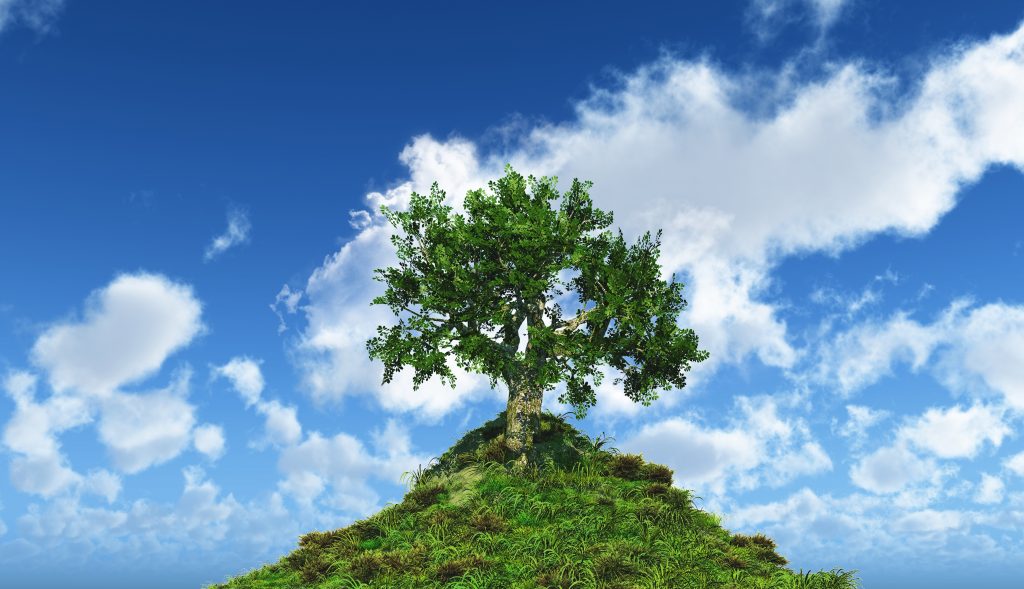Neglecting to address hazardous limbs on trees can pose significant dangers and risks. Here are some of the potential dangers associated with not addressing tree hazardous limbs:

Addressing hazardous limbs on trees is crucial for maintaining a safe environment, preventing property damage, and ensuring the well-being of individuals and communities. Prompt action to identify and address hazardous limbs through regular tree inspections, pruning, or removal by qualified professionals is essential. By prioritizing tree care and addressing potential risks, property owners can mitigate dangers, reduce liabilities, and preserve the health, beauty, and value of trees within their surroundings.
Visible Signs to Look For
There are several visible signs that a tree might be a hazard. They are:
Here’s what to look for to determine whether or not your tree is a hazard. And remember, if in doubt, bring in a Certified Arborist ASAP.

ROOTS
A tree’s root system is its lifeline. Without a strong and healthy root system, a tree can become unbalanced and hazardous.
A damaged root system makes a tree likely to fall over in a windstorm, or even from the weight of its own branches and leaves. Damage occurs in many different ways, including:
Symptoms of root damage may be seen in the crown of a tree in the form of branch die-back, as well as leaves that are yellowed or browned and smaller than normal. These are signs that roots are not providing the water and nutrients needed by the tree.
Call an arborist right away if you notice that your trees –
CROWN SHAPE
A tree with an uneven or misshapen form can be a hazard if its internal structure is damaged. A misshapen form can result from bad pruning or topping cuts, storm damage, and bad growing conditions.
Bad pruning can result in lots of water sprouts, or suckering branches that are not strongly attached.
An example of bad growing conditions is a tree growing in too much shade, where its branches grow weakly and unevenly up and out in search of sunlight.
An uneven tree crown means that weight is unevenly distributed and the tree may not be able to support itself. Large, overgrown branches or branches with growth only at their tips contribute to this imbalance.
Get your trees evaluated immediately if they –
CRACKED BARK
A tree’s biggest protection is its bark. Bark keeps insects and disease from getting in, cushions against injury, and moderates a tree’s internal temperature. When a tree’s bark cracks or splits, it exposes its internal wood to decay, and can signal that larger problems have already damaged the tree internally.
If you notice the following, call your arborist –
DEAD WOOD
Dead wood within a tree’s crown is a danger sign. Properly pruned trees have balanced, open crowns that move in the wind and are more resistant to storm damage. Dead wood can signal internal trunk decay, or that the tree has walled off a large, diseased branch in response to its decay.
Dead wood is not flexible; rather, it’s brittle and can drop at any time. A large branch that has broken off but is still hanging in the tree’s crown is especially dangerous because it’s not attached to anything and can fall without warning.
Don’t let the following go without acting –
Remember, unless your tree has nothing within its range (its height, measured outward from its trunk base and the spread of its branches), it is a hazard if it has dead wood that drops or if the tree falls over.
CANKERS
If you see areas of missing, sunken, or damaged bark on your tree’s branches or trunk, it may be a canker. Cankers result from diseases or from wound tissue that did not seal off a decayed area.
The canker you see on the outside of a tree’s bark can indicate more extensive internal decay or damage, and can signal that your tree is a hazard.
Call an arborist to evaluate your trees if –
Branches that have poor attachment angles are inherently weaker and more prone to damage and splitting. Trees that have co-dominant leaders, meaning the main trunk divides into two or more competing trunks, also form weak attachment angles.

When branches grow too closely together, their bark fuses at their base but is not sealed off from damage. You’ve probably seen these branch unions and wanted to give them a good flossing. Debris and moisture collect and attract insects and diseases, compounding the potential of weakly attached branches to decay and become a hazard.
Trees with naturally upright growth patterns are more susceptible to fused or included bark at branch unions, but many species that have not been properly pruned can develop these as well. Bradford pears are notorious for splitting apart in storms because of their narrow branch crotches and weakly-attached branches.
If you see any of the following, call your arborist right away –
There may be no visible signs of decay, but poorly attached wood can fall at any time.
DECAY
Advanced, visible decay is among the most dangerous symptoms of a hazard tree. If you see mushrooms and conks (fungus that looks like a shelf) growing on your tree, or areas of crumbling bark, it can be a sign of internal structural decay. This internal decay may also be hidden because a tree can continue to grow healthy wood and bark over areas of decay. The new growth masks the decay but does not counteract it or the structural damage that can lead to tree failure.
For large trees, such as maples, decay can be more serious because the scale of the tree means its hazard potential is that much greater.
Be sure to call an arborist if you see –
Do not put off getting an evaluation of your tree’s health and structural soundness. The potential damage from falling branches or a falling tree is too great. Leaving damage to work itself out isn’t a solution, as decay won’t stop on its own.
There are many steps that can be taken to reduce the chance that a tree will become a hazard and you or your property become targets.
One approach is to evaluate the risk of your trees to potential targets. There are four options to mitigate risk:

Prune your trees. Keep your trees in good shape to reduce their chance of becoming hazards. Along with pruning, regular tree inspections can identify problems early and stop hazardous situations from developing. Corrective pruning removes damaged or decayed branches and can reduce a tree’s size or spread to keep it out of range of nearby targets.
Move targets out of range. If you have items near a tree, such as play equipment or a parked car, moving these things out of a tree’s hazard range is the easiest solution to prevent damage. Moving a target, in combination with corrective pruning or crown reduction, can be a good solution for small spaces.
Create a habitat from a hazard tree. If it’s possible to do so, keeping a tree as a “snag” or wildlife tree is encouraged. After pruning it to a size that reduces its hazard range, the tree can be left standing to provide sheltering habitat for birds and wildlife.
Remove the tree. If cabling and bracing a high-risk tree is done correctly, a tree’s lifespan can be increased by stabilizing its branches or trunk. But cabling and bracing don’t fix a tree’s structural problems, and not every tree is a candidate. When there are no other options but to remove a tree, consider having firewood made from your felled tree, or ask that its wood find a second life as milled lumber for urban woodworkers to use. You can plant another tree in its place, and keep it healthy and well-pruned from the start.
[geocentric_weather id=”45ff4ccd-3d3f-498e-b0b9-91aaaf766bc4″]
[geocentric_about id=”45ff4ccd-3d3f-498e-b0b9-91aaaf766bc4″]
[geocentric_neighborhoods id=”45ff4ccd-3d3f-498e-b0b9-91aaaf766bc4″]
[geocentric_thingstodo id=”45ff4ccd-3d3f-498e-b0b9-91aaaf766bc4″]
[geocentric_busstops id=”45ff4ccd-3d3f-498e-b0b9-91aaaf766bc4″]
[geocentric_mapembed id=”45ff4ccd-3d3f-498e-b0b9-91aaaf766bc4″]
[geocentric_drivingdirections id=”45ff4ccd-3d3f-498e-b0b9-91aaaf766bc4″]
[geocentric_reviews id=”45ff4ccd-3d3f-498e-b0b9-91aaaf766bc4″]